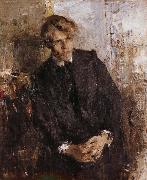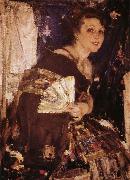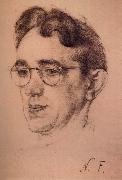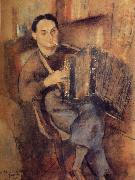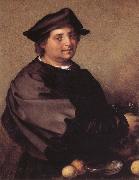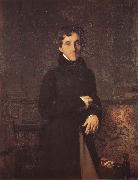Wholesale Oil Painting No Minimum |
|||||||||||
|
|
|||||||||||

|
|||||||||||
|
|
|
||||||||
Nikolay FechinRussian, 1881-1955 |
||||||||
|
|
||||||||
Portrait of man
Portrait of man Painting ID:: 50316 |
mk211
1909
Oil on canvas
113x93.3cm
mk211 1909 Oil on canvas 113x93.3cm |
|||||||
|
|
||||||||
Nikolay FechinRussian, 1881-1955 |
||||||||
|
|
||||||||
|
|
Portrait of man
Portrait of man Painting ID:: 50347 |
mk211
1916
Oil on canvas
144x87cm
mk211 1916 Oil on canvas 144x87cm |
||||||
|
|
||||||||
Nikolay FechinRussian, 1881-1955 |
||||||||
|
|
||||||||
|
|
Portrait of man
Portrait of man Painting ID:: 50375 |
mk211
1924
mk211 1924 |
||||||
|
|
||||||||
Nikolay FechinRussian, 1881-1955 |
||||||||
|
|
||||||||
|
|
Portrait of Man
Portrait of Man Painting ID:: 50426 |
mk211
Oil on canvas
91.4x76.2cm
mk211 Oil on canvas 91.4x76.2cm |
||||||
|
|
||||||||
Nikolay FechinRussian, 1881-1955 |
||||||||
|
|
||||||||
|
|
Portrait of man
Portrait of man Painting ID:: 50429 |
mk211
1930-1940
42.8x32.6cm
mk211 1930-1940 42.8x32.6cm |
||||||
|
|
||||||||
Nikolay FechinRussian, 1881-1955 |
||||||||
|
|
||||||||
|
|
Portrait of man
Portrait of man Painting ID:: 50437 |
mk211
paper
mk211 paper |
||||||
|
|
||||||||
Nikolay FechinRussian, 1881-1955 |
||||||||
|
|
||||||||
|
|
Portrait of man
Portrait of man Painting ID:: 50461 |
mk211
1930-1940
mk211 1930-1940 |
||||||
|
|
||||||||
Nikolay FechinRussian, 1881-1955 |
||||||||
|
|
||||||||
|
|
Portrait of Man
Portrait of Man Painting ID:: 50463 |
mk211
pencil sketch
mk211 pencil sketch |
||||||
|
|
||||||||
Francisco Goya1746-1828 Goya is considered the 18th Century's foremost painter and etcher of Spanish culture, known for his realistic scenes of battles, bullfights and human corruption. Goya lived during a time of upheaval in Spain that included war with France, the Inquisition, the rule of Napoleon's brother, Joseph, as the King of Spain and, finally, the reign of the Spanish King Ferdinand VII. Experts proclaim these events -- and Goya's deafness as a result of an illness in 1793 -- as central to understanding Goya's work, which frequently depicts human misery in a satiric and sometimes nightmarish fashion. From the 1770s he was a royal court painter for Charles III and Charles IV, and when Bonaparte took the throne in 1809, Goya swore fealty to the new king. When the crown was restored to Spain's Ferdinand VII (1814), Goya, in spite of his earlier allegiance to the French king, was reinstated as royal painter. After 1824 he lived in self-imposed exile in Bordeaux until his death, reportedly because of political differences with Ferdinand. Over his long career he created hundreds of paintings, etchings, and lithographs, among them Maya Clothed and Maya Nude (1798-1800); Caprichos (1799-82); The Second of May 1808 and The Third of May 1808 (1814); Disasters of War (1810-20); and The Black Paintings (1820-23). |
||||||||
|
|
||||||||
|
|
Portrait of man
Portrait of man Painting ID:: 50681 |
mk214
Oil on canvas
mk214 Oil on canvas |
||||||
|
|
||||||||
Jules PascinBulgarian-born French Expressionist Painter, 1885-1930,American painter, draughtsman and printmaker of Bulgarian birth, active in France. He attended secondary school in Vienna, returning in 1901 to Bucharest, where his family had settled, and working briefly in the office of his father's grain-merchandizing business. He was, however, already becoming passionately interested in drawing, for which he showed precocious talent. At the age of 16 he became the lover of a woman who ran a brothel and was allowed by her to draw the residents. In 1903 he moved to Munich, where he attended the art school run by Moritz Heymann. |
||||||||
|
|
||||||||
|
|
Portrait of Man
Portrait of Man Painting ID:: 51452 |
mk219
Oil o ncanvas
90x71cm
mk219 Oil o ncanvas 90x71cm |
||||||
|
|
||||||||
Peter Paul RubensFlemish Baroque Era Painter, 1577-1640 Peter Paul Rubens (June 28, 1577 ?C May 30, 1640) was a prolific seventeenth-century Flemish Baroque painter, and a proponent of an exuberant Baroque style that emphasized movement, color, and sensuality. He is well-known for his Counter-Reformation altarpieces, portraits, landscapes, and history paintings of mythological and allegorical subjects. In addition to running a large studio in Antwerp which produced paintings popular with nobility and art collectors throughout Europe, Rubens was a classically-educated humanist scholar, art collector, and diplomat who was knighted by both Philip IV, king of Spain, and Charles I, king of England. Rubens was a prolific artist. His commissioned works were mostly religious subjects, "history" paintings, which included mythological subjects, and hunt scenes. He painted portraits, especially of friends, and self-portraits, and in later life painted several landscapes. Rubens designed tapestries and prints, as well as his own house. He also oversaw the ephemeral decorations of the Joyous Entry into Antwerp by the Cardinal-Infante Ferdinand in 1635. His drawings are mostly extremely forceful but not detailed; he also made great use of oil sketches as preparatory studies. He was one of the last major artists to make consistent use of wooden panels as a support medium, even for very large works, but he used canvas as well, especially when the work needed to be sent a long distance. For altarpieces he sometimes painted on slate to reduce reflection problems. His fondness of painting full-figured women gave rise to the terms 'Rubensian' or 'Rubenesque' for plus-sized women. The term 'Rubensiaans' is also commonly used in Dutch to denote such women. |
||||||||
|
|
||||||||
|
|
Portrait of Man
Portrait of Man Painting ID:: 53015 |
mk225
1609-1610
52x39cm
mk225 1609-1610 52x39cm |
||||||
|
|
||||||||
Jean-Auguste Dominique IngresFrench Neoclassical Painter, 1780-1867 was a French Neoclassical painter. Although he considered himself a painter of history in the tradition of Nicolas Poussin and Jacques-Louis David, by the end of his life it was Ingres' portraits, both painted and drawn, that were recognized as his greatest legacy. A man profoundly respectful of the past, he assumed the role of a guardian of academic orthodoxy against the ascendant Romantic style represented by his nemesis Eug??ne Delacroix. His exemplars, he once explained, were "the great masters which flourished in that century of glorious memory when Raphael set the eternal and incontestable bounds of the sublime in art ... I am thus a conservator of good doctrine, and not an innovator." Nevertheless, modern opinion has tended to regard Ingres and the other Neoclassicists of his era as embodying the Romantic spirit of his time, while his expressive distortions of form and space make him an important precursor of modern art.. |
||||||||
|
|
||||||||
|
|
Portrait of man
Portrait of man Painting ID:: 53190 |
mk227
75.2x58.1cm
1810
mk227 75.2x58.1cm 1810 |
||||||
|
|
||||||||
Jean-Auguste Dominique IngresFrench Neoclassical Painter, 1780-1867 was a French Neoclassical painter. Although he considered himself a painter of history in the tradition of Nicolas Poussin and Jacques-Louis David, by the end of his life it was Ingres' portraits, both painted and drawn, that were recognized as his greatest legacy. A man profoundly respectful of the past, he assumed the role of a guardian of academic orthodoxy against the ascendant Romantic style represented by his nemesis Eug??ne Delacroix. His exemplars, he once explained, were "the great masters which flourished in that century of glorious memory when Raphael set the eternal and incontestable bounds of the sublime in art ... I am thus a conservator of good doctrine, and not an innovator." Nevertheless, modern opinion has tended to regard Ingres and the other Neoclassicists of his era as embodying the Romantic spirit of his time, while his expressive distortions of form and space make him an important precursor of modern art.. |
||||||||
|
|
||||||||
|
|
Portrait of man
Portrait of man Painting ID:: 53224 |
mk227
1834cm
Oil on canvas
mk227 1834cm Oil on canvas |
||||||
|
|
||||||||
Andrea del Sartob.July 16, 1486, Florence d.Sept. 28, 1530, Florence Italian Andrea del Sarto Galleries Andrea del Sarto (1486 ?C 1531) was an Italian painter from Florence, whose career flourished during the High Renaissance and early-Mannerism. Though highly regarded by his contemporaries as an artist "senza errori" (i.e., faultless), he is overshadowed now by equally talented contemporaries like Raphael. Andrea fell in love with Lucrezia (del Fede), wife of a hatter named Carlo, of Recanati; the hatter dying opportunely, Andrea married her on 26 December 1512. She has come down to us in many a picture of her lover-husband, who constantly painted her as a Madonna and otherwise; even in painting other women he made them resemble Lucrezia. She was less gently handled by Giorgio Vasari, a pupil of Andrea, who describes her as faithless, jealous, and vixenish with the apprentices; her offstage character permeates Robert Browning's poem-monologue "Andrea del Sarto called the 'faultless painter'" (1855) . He dwelt in Florence throughout the memorable siege of 1529, which was soon followed by an infectious pestilence. He caught the malady, struggled against it with little or no tending from his wife, who held aloof, and he died, no one knowing much about it at the moment, on 22 January 1531, at the comparatively early age of forty-three. He was buried unceremoniously in the church of the Servites. His wife survived her husband by forty years. A number of paintings are considered to be self-portraits. One is in the National Gallery, London, an admirable half-figure, purchased in 1862. Another is at Alnwick Castle, a young man about twenty years, with his elbow on a table. Another youthful portrait is in the Uffizi Gallery, and the Pitti Palace contains more than one. |
||||||||
|
|
||||||||
|
|
Portrait of man
Portrait of man Painting ID:: 53270 |
mk228
Oil on canvas
mk228 Oil on canvas |
||||||
|
|
||||||||
Jean-Auguste Dominique IngresFrench Neoclassical Painter, 1780-1867 was a French Neoclassical painter. Although he considered himself a painter of history in the tradition of Nicolas Poussin and Jacques-Louis David, by the end of his life it was Ingres' portraits, both painted and drawn, that were recognized as his greatest legacy. A man profoundly respectful of the past, he assumed the role of a guardian of academic orthodoxy against the ascendant Romantic style represented by his nemesis Eug??ne Delacroix. His exemplars, he once explained, were "the great masters which flourished in that century of glorious memory when Raphael set the eternal and incontestable bounds of the sublime in art ... I am thus a conservator of good doctrine, and not an innovator." Nevertheless, modern opinion has tended to regard Ingres and the other Neoclassicists of his era as embodying the Romantic spirit of his time, while his expressive distortions of form and space make him an important precursor of modern art.. |
||||||||
|
|
||||||||
|
|
Portrait of man
Portrait of man Painting ID:: 53300 |
mk227
Oil on canvas
1834
mk227 Oil on canvas 1834 |
||||||
|
|
||||||||
Andrea del Sartob.July 16, 1486, Florence d.Sept. 28, 1530, Florence Italian Andrea del Sarto Galleries Andrea del Sarto (1486 ?C 1531) was an Italian painter from Florence, whose career flourished during the High Renaissance and early-Mannerism. Though highly regarded by his contemporaries as an artist "senza errori" (i.e., faultless), he is overshadowed now by equally talented contemporaries like Raphael. Andrea fell in love with Lucrezia (del Fede), wife of a hatter named Carlo, of Recanati; the hatter dying opportunely, Andrea married her on 26 December 1512. She has come down to us in many a picture of her lover-husband, who constantly painted her as a Madonna and otherwise; even in painting other women he made them resemble Lucrezia. She was less gently handled by Giorgio Vasari, a pupil of Andrea, who describes her as faithless, jealous, and vixenish with the apprentices; her offstage character permeates Robert Browning's poem-monologue "Andrea del Sarto called the 'faultless painter'" (1855) . He dwelt in Florence throughout the memorable siege of 1529, which was soon followed by an infectious pestilence. He caught the malady, struggled against it with little or no tending from his wife, who held aloof, and he died, no one knowing much about it at the moment, on 22 January 1531, at the comparatively early age of forty-three. He was buried unceremoniously in the church of the Servites. His wife survived her husband by forty years. A number of paintings are considered to be self-portraits. One is in the National Gallery, London, an admirable half-figure, purchased in 1862. Another is at Alnwick Castle, a young man about twenty years, with his elbow on a table. Another youthful portrait is in the Uffizi Gallery, and the Pitti Palace contains more than one. |
||||||||
|
|
||||||||
|
|
Portrait of man
Portrait of man Painting ID:: 53271 |
mk228
Oil on canvas
mk228 Oil on canvas |
||||||
|
|
||||||||
VELAZQUEZ, Diego Rodriguez de Silva ySpanish Baroque Era Painter, 1599-1660 Spanish painter. He was one of the most important European artists of the 17th century, spending his career from 1623 in the service of Philip IV of Spain. His early canvases comprised bodegones and religious paintings, but as a court artist he was largely occupied in executing portraits, while also producing some historical, mythological and further religious works. His painting was deeply affected by the work of Rubens and by Venetian artists, especially Titian, as well as by the experience of two trips (1629-31 and 1649-51) to Italy. Under these joint influences he developed a uniquely personal style characterized by very loose, expressive brushwork. |
||||||||
|
|
||||||||
|
|
Portrait of man
Portrait of man Painting ID:: 54694 |
mk237
1626-28
Oil on canvas
104x79cm
mk237 1626-28 Oil on canvas 104x79cm |
||||||
|
|
||||||||
VELAZQUEZ, Diego Rodriguez de Silva ySpanish Baroque Era Painter, 1599-1660 Spanish painter. He was one of the most important European artists of the 17th century, spending his career from 1623 in the service of Philip IV of Spain. His early canvases comprised bodegones and religious paintings, but as a court artist he was largely occupied in executing portraits, while also producing some historical, mythological and further religious works. His painting was deeply affected by the work of Rubens and by Venetian artists, especially Titian, as well as by the experience of two trips (1629-31 and 1649-51) to Italy. Under these joint influences he developed a uniquely personal style characterized by very loose, expressive brushwork. |
||||||||
|
|
||||||||
|
|
Portrait of man
Portrait of man Painting ID:: 54753 |
mk237
1635-1645
Oil on canvas
76x64.8cm
mk237 1635-1645 Oil on canvas 76x64.8cm |
||||||
|
|
||||||||
|
VELAZQUEZ, Diego Rodriguez de Silva y Spanish Baroque Era Painter, 1599-1660 Spanish painter. He was one of the most important European artists of the 17th century, spending his career from 1623 in the service of Philip IV of Spain. His early canvases comprised bodegones and religious paintings, but as a court artist he was largely occupied in executing portraits, while also producing some historical, mythological and further religious works. His painting was deeply affected by the work of Rubens and by Venetian artists, especially Titian, as well as by the experience of two trips (1629-31 and 1649-51) to Italy. Under these joint influences he developed a uniquely personal style characterized by very loose, expressive brushwork. Portrait of man mk237 1635-1645 Oil on canvas 76x64.8cm |
||||||||
|
|
||||||||
|
Prev Next
|
||||||||
|
|
||||||||
|
Related Paintings to VELAZQUEZ, Diego Rodriguez de Silva y :. |
||||||||
|
|
||||||||
|
CONTACT US |
